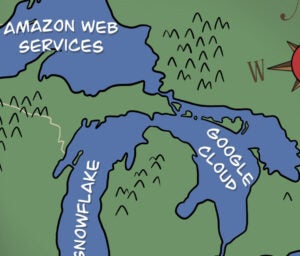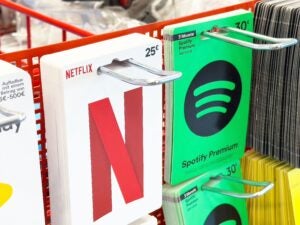American adults streamed almost 142 billion hours of content during the week of May 11, up roughly 43% from a year ago, according to Nielsen. And The Trade Desk CEO Jeff Green predicted during the company’s Q1 earnings call that reach on CTV will “rival and even surpass” linear TV in the near future.
But agency executives argue the math isn’t that simple, because the definition of reach differs based on each advertisers’ audience, budget constraints and business objectives.
Many advertisers can’t accomplish their broad reach and awareness goals without linear TV simply because broadcast has higher penetration in US households, according to Gibbs Haljun, total investment lead at GroupM’s Mindshare.
“You can get broadcast television for free,” he said. “To access CTV, you need an internet-enabled device.”
As a result, Americans watch more hours of linear TV overall. In March, the average US household spent less than one-quarter of its time with TV on streaming platforms, with a majority of that on Netflix, according to Nielsen. So brands trying to reach massive audiences will struggle to meet their reach goals without some linear TV in their media mix.
For brands targeting younger demos such as 12- to 18-year-olds, building reach on CTV could be the right strategy. “There’s no question that linear TV has basically abandoned that target,” said Jason Kanefsky, chief investment officer at Havas Media. But most big consumer brands are looking to broadly reach adults between 18 and 54, he added.
And while CTV viewing is up overall, it’s not all ad supported. In March, US households spent 29% of their time streaming on Netflix and 9% of their streaming time on Amazon Prime, per Nielsen.
A necessary complement
Because of these reach limitations, advertisers still see CTV not as a replacement for linear, but as a complement to build incremental reach against cord-cutting audiences.
But advertisers also have to factor in cost when building incremental reach, and CPMs on CTV can be twice as high as on broadcast or cable.
“On CTV, my guaranteed CPM is at least double the price [of cable], unless you’re reaching a very young audience,” Havas Media’s Kanefsky said.
Brands using CTV to drive direct response outcomes may be more willing to pay that premium for the right audience. But the juice isn’t always worth the squeeze. A Havas Media client ran a linear TV campaign targeting an 18- to 49-year-old demo, and only added 2% incremental reach by layering on media from Roku.
“That’s nice, but it wasn’t this jaw dropping number,” Kanefsky said. “The cost of the incremental reach on these devices is significantly higher than on linear.”
Brands also hesitate to go all-in with CTV platforms, due to aggregated networks that don’t disclose exactly what content their ad is running against, said a senior media buying exec at a large agency.
Of course, brands have been increasing the amount of CTV they buy as consumers cut the cord, and will continue to do so as more people adopt streaming platforms during the pandemic.
Agencies are probably behind in shifting spend to CTV, because continuing to spend on linear as ratings fall artificially drives up prices. “We’re trying to diversify our spend in alignment with consumption evolution,” the media buying exec said.
But while CTV is no longer a nice-to-have for most brands, understanding exactly when and how to add it to the mix varies heavily based on the brand’s target audience and campaign objectives.
“There are a tremendous amount of impressions available and multiple players in the CTV market providing a valuable partner to linear,” Kanefsky said, “but not an alternative.”















